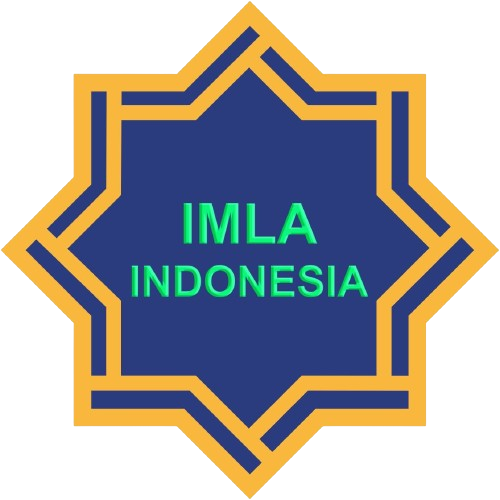Perubahan Makna pada “Dictionary of Covid-19 Terms: English – French – Arabic” Terbitan Alesco 2020 (Kajian Semantik)
Abstract
Penelitian ini berusaha untuk membedah istilah – istilah tentang Covid-19 yang tercantum dalam Dictionary of Covid-19 Terms: English – French – Arabic (Mu’jam Mustalahat Covid-19: Injlizi – Faransi – Araby), sebuah kamus elektronik yang diterbitkan oleh ALESCO (Arab League Educational, Cultural and Scientific Organization). Dikarekan sebuah bahasa sangat berhubungan erat dengan fenomena, tentu fenomena sebesar Pandemi Covid-19 punya dampak yang besar terhadap perkembangan bahasa. Istilah – istilah mulai digunakan untuk penamaan, baik gejala maupun tindakan. Dalam hal ini, penanggung jawab urusan budaya Liga Arab, ALESCO (Arab League Educational, Cultural and Scientific Organization) menerbitkan sebuah kamus untuk menghimpun istilah – istilah yang berkaitan dengan Covid-19. Penelitian ini menggunakan metode kualitatif – deskriptif dengan pendekatan semantic change ala Mukhtar Umar, dengan menelusuri asal muasal istilah secara leksikal untuk dihubungkan dengan konteks Covid-19. Hasil yang diperoleh dari penelitian ini adalah, bahwa istilah – istilah yang ada dalam kamus ini bukanlah produksi kata baru, melainkan kata lama yang dilabeli dengan makna baru, 90% dari istilah-istilah tersebut mengalami bentuk perluasan makna, sedangkan sisanya mengalami penyempitan dan pergeseran makna.
References
Anon. 2020. “منظمة ‘ألكسو’ تصدر اول معجم لمصطلحات كورونا ب3 لغات.” اندبندنت عربية. Diambil 6 Juli 2021 (https://www.independentarabia.com)
Cohen, Laurence Jonathan. 1966. The Diversity of Meaning. Methuen.
Faez, Ad-Dayyah. t.t. Ilmu Al-Dalalah Al-Araby : Bayna Nadzariyah Wa Tathbiq. Kairo: Dar Al-Fikr Al-Muashir.
Kholison, Mohammad; 2016. Semantik Bahasa Arab: Tinjauan Historis, Teoritik dan Aplikatif / Mohammad Kholison. Lisan arabi.
Mivtakh, Balkis Aminallah Nurul. 2020. “Sejarah Perkembangan Ilmu Dalalah dan Para Tokoh-Tokohnya.” Tatsqifiy: Jurnal Pendidikan Bahasa Arab 1 (2):87–99. doi: 10.30997/tjpba.v1i2.2782.
Mukhtar, Ahmad Umar. 1982. Ilmu Dalalah. Kairo: Alam Al-Kotob.
Mukhtar, Umar, Ahmad. 2008a. Mu’jam Al-Lughah Al-Arabiyyah Al-Mu’ashirah. Vol. 3. Kairo: Alam Al-Kotob.
Mukhtar, Umar, Ahmad. 2008b. Mu’jam Al-Lughah Al-Arabiyyah Al-Mu’ashirah. Vol. 2. Kairo: Alam Al-Kotob.
Mukhtar, Umar, Ahmad. 2008c. Mu’jam Al-Lughah Al-Arabiyyah Al-Mu’ashirah. Vol. 1. Kairo: Alam Al-Kotob.
Read, Allen Walker. 1948. “An account of the word ‘semantics.’” Word 4 (2):78–97.
Rohbiah, Tatu Siti. 2017. “Perubahan Makna Kata Serapan Bahasa Arab dalam Bahasa Inggris pada Istilah Ekonomi.” Buletin Al-Turas 23 (2):319–35.
Ullmann, Stephen. 1962. The Science of Meaning: An Introduction to Semantics. Blackwell.
Vendryes, Joseph. 1931. Language: A Linguistic Introduction to History. K. Paul, Trench, Trubner & Company, Limited.
Zaini, Hisyam. 2010. “Perubahan Makna Leksikal dalam Pemakaian Bahasa Arab" (Studi Kasus Pondok Modern Gontor).” Adabiyyāt: Jurnal Bahasa dan Sastra 9 (1):133–54. doi: 10.14421/ajbs.2010.09107.
Copyright (c) 2023 Middle Eastern Culture & Religion Issues

This work is licensed under a Creative Commons Attribution-NonCommercial-ShareAlike 4.0 International License.
Middle Eastern Culture and Religion Issues (MECRI) applies the Creative Commons Attribution-NonCommercial-ShareAlike 4.0 International License, with the copyright on the published articles held by the journal. Authors are required to transmit the copyright to this journal once the articles are accepted. This journal is granted a non-exclusive license to publish the articles as the original publisher, along with the commercial right to publish printed issues for sale. Since this journal applies an open-access mode, authors may post articles published by this journal on personal websites or institutional repositories both prior to and after publication while providing bibliographic details that credit this journal.
By publishing with this journal, the copyright holder grants any third party the lawful right to use their published article to the extent provided by the Creative Commons Attribution-NonCommercial-ShareAlike 4.0 International license.
Subsequently, people are lawfully permitted to share, distribute, remix, adapt, and build upon the published articles for noncommercial purposes only, by providing appropriate credit or attribution (Title, Author, Source, and License of the work), including a link to the license, indicating if any changes were made, and redistribute the derivative outputs under the same license (CC BY-NC-SA 4.0).

















